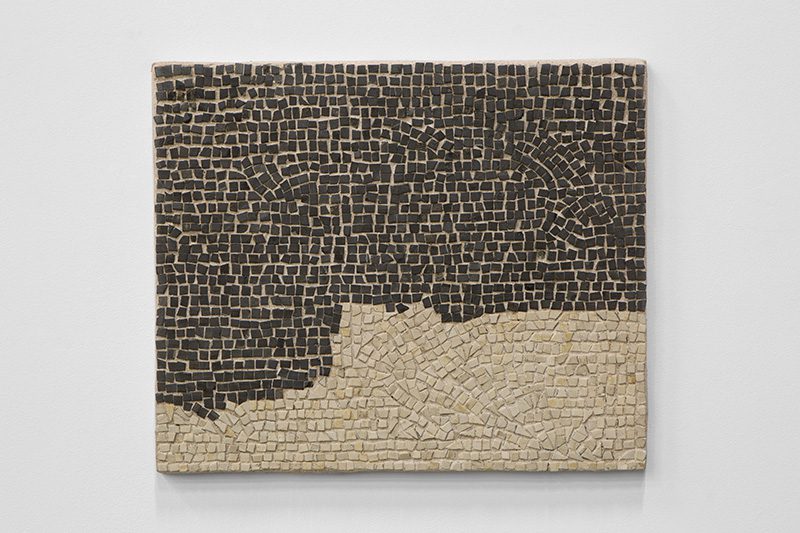Art Cities:Paris-Christodoulos Panayiotou
 Christodoulos Panayiotou (4th DESTE Prize Winner 2005, from the DESTE Foundation for Contemporary Arts, Athens), composes a world from different – multidimensional images, constituting his personal mythology by using different expressive media, not only to convey his artistic concerns, but also as carriers of a visual poetic speech, that connects the threads of history from the Cyprus of Βronze Age to Globalization.
Christodoulos Panayiotou (4th DESTE Prize Winner 2005, from the DESTE Foundation for Contemporary Arts, Athens), composes a world from different – multidimensional images, constituting his personal mythology by using different expressive media, not only to convey his artistic concerns, but also as carriers of a visual poetic speech, that connects the threads of history from the Cyprus of Βronze Age to Globalization.
By Efi Michalarou
Photo: Galerie Kamel Mennour Archive
In his first solo exhibition at the galerie kamel mennour in Paris, a gallery that exhibits very important artists from Dan Flavin and Pier Paolo Calzolari to Gina Pane, the young Cypriot artist Christodoulos Panayiotou who lives and works between Limassol and Paris, creates a visual universe of images, like theatrical acts where the myths mingle with the silent narratives and the emotional and economic relationships that unite them as “Theories Of Harm” and create a maze of enigmas. The exhibition in Paris begins with a fountain, a classic form in art history. The fountain is made of copper, a highly meaningful media for the artist. The metal takes its name from that of Cyprus. In antiquity, it was called “aes Cyprus” (Cyprus bronze) because the island was the centre for its production. In the work of Christodoulos Panayiotou “L’Achat du Cuivre” the symbolic flux is manifested. When the flow of water is cut, the fountain becomes copper again. Its identity is deconstructed. Losing its ties the fountain becomes again copper and returns to its raw materiality. In the marble floor, is shown what is usually effaced, the written indications for the quarrymen concerning weight, provenance, quality, and destination, these inscriptions are the signs of the raw material’s transformation into a noble one. They make sculpture, building, décor possible, but they always end up erased. The material appears as if untouched by all the acts of which it is the result. The final material ends up being idealised. The artist demystifies its power by placing in the foreground the stages of human labour. The marble floor of Christodoulos Panayiotou semiotically extends from Michelangelo when he had placed on the ground, under the windows of Pope Julius II,blocks of raw marble transported from the mountains of Carrara to Carl André’s “Magnesium Copper Plain” (1967). The mosaics are from tiles that come from copies of ancient works. The artist bought them in Syria before the beginning of the war. The artist decomposed them and recreated them, in order to create through the limestone, a story between the genuine and the fake. Here it is a promise made during the siege of Famagusta in Cyprus in 1570. The stained glass replays the history of the Rainbow Flag. The flag was conceived by Gilbert Baker, graphic artist and political activist, for the first LGBT Pride march in San Francisco in 1978. The flag enjoyed an enormous success. Panayiotou rehabilitates and reconfigures the two colours (pink and turquoise). The artist has brought back into the light colours that illuminate or darken depending on the position of the sun. The photographs with bougainvillea, a plant that hugs the Mediterranean landscape, come from a trip to Guangzhou, the world’s production center of artificial flowers. These flowers were once objects of value, Marie Antoinette collected them for instance. Now that they are produced en masse, they have become symbols of globalisation. “I picked flowers in the factories, as if I was walking through the fields”, says the artist. The overlaying of photography of the real and the false highlights the hiatus between nature and its transposition into merchandise. This gap contains the whole question of the creation of value and its possible by-products.
Info: galerie kamel mennour, 47 rue Saint-André des Arts, Paris, Duration: 12/3-16/4/16, Days & Hours: Tue-Sat 11:00-19:00, www.kamelmennour.com



